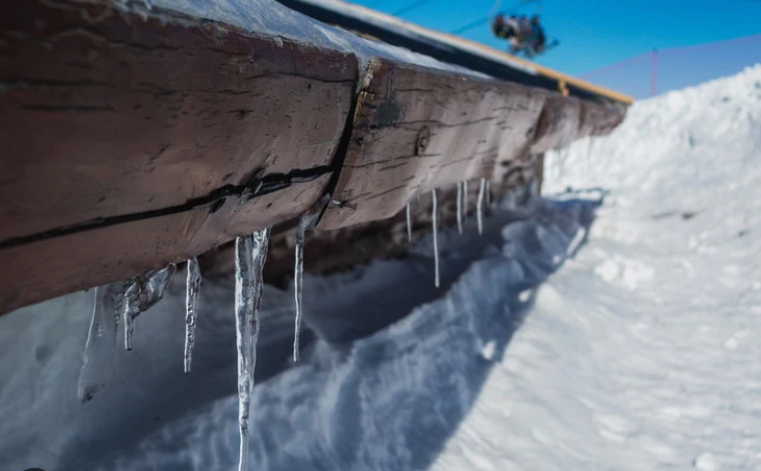
Log homes are a special type of home to own, they have many amazing benefits and character to them that we love. With owning a log home there are also some challenges as log homes can be more susceptible to certain types of damage. Seeing as how moisture and wood are not a great combination, wet climates are one of the bigger challenges to a log home. It is crucial to do the best you can do as a log home owner, to prevent your home from water damage. One type of water damage can come from what are called Ice Dams. Ice Dams will not be an issue for every log home owner. This is mostly going to be relevant to log homes in northern states and anywhere else that can have extreme winter weather.
First, what exactly is an Ice Dam? Ice dams occur when large amounts of ice accumulate on the roof of a home, near the edge, preventing snow that has melted to properly drain off of the roof. What happens is the moisture from the melted snow can then back up into the ceilings and walls of the home, which would end up causing water damage to multiple areas of a home. The water damage can be especially challenging on a log home home. In some instances ice dams can even damage gutters, and loosen shingles. It is something that should be addressed immediately and prevented if possible. If you have had harsh winter weather and notice an ice dam on your roof, here are some things you can do to help. The best immediate fix for an ice dam is to use a ladder to access where the ice dam is located and pour hot water on it gently, then the water will be able to drain down to the roof through the gutters. Another immediate fix option is a roof rake. This type of rake will allow you to remove snow off of your roof, from staying on the ground.
Prevention:
The absolute best thing that you can do is prevent the ice dams from occuring in the first place. Ice dams will typically occur when the roof of a home is too warm. Do everything you can do to ensure that your home is properly sealed. Seal all points of the home where warm air leaks from living spaces to spaces directly below the roof. You might also consider installing a heat cable prior to Winter. Heat cables will consistently melt all the snow and ice off of your roof allowing it to drain, it is best to turn them on a couple of hours before the snow or ice is expected to fall. Another great prevention is to avoid a completely flat roof. A flat roof will hold snow and ice much longer since it does not have a slope to drain from, this is going to make the formation of an ice dam much more likely to occur.
You should also keep in mind your homeowners insurance policy when it comes to coverage on something like this. Log home insurance coverage is also a bit different and can be more complicated compared to that of a traditional home. This would be something especially important to take note of if you live in an area or have a home more susceptible to this type of damage.








